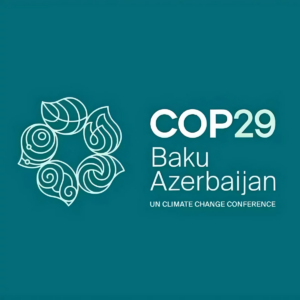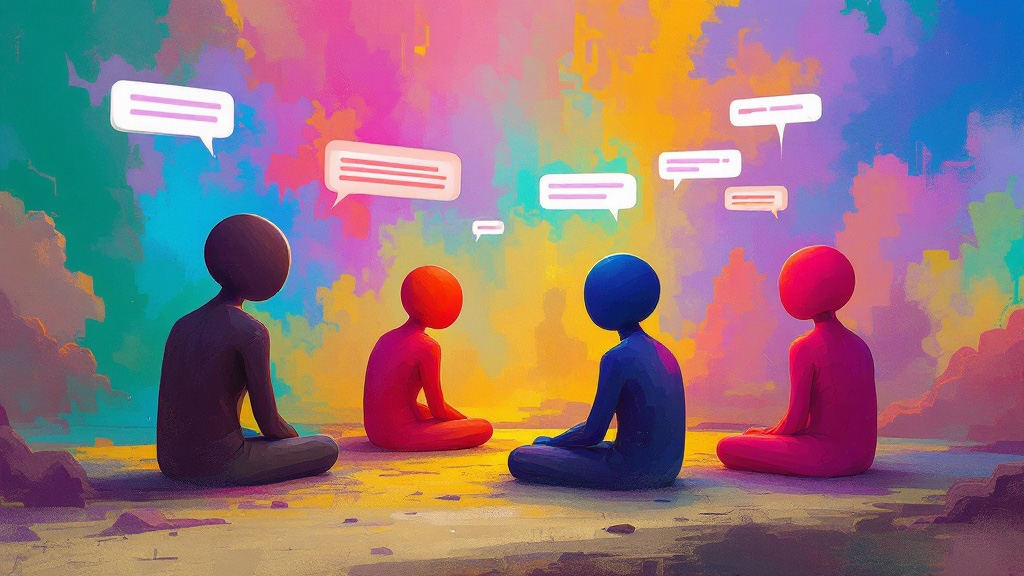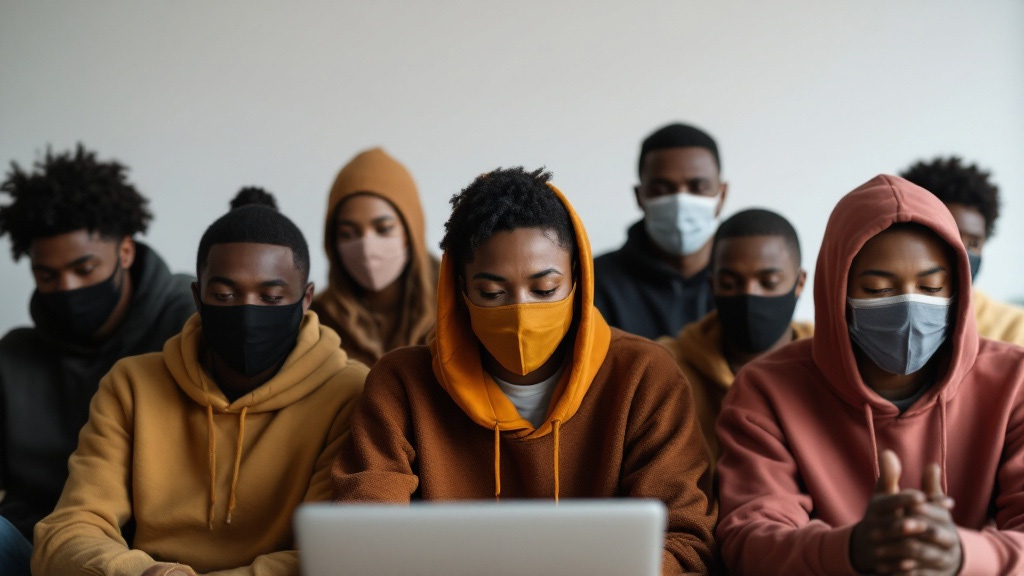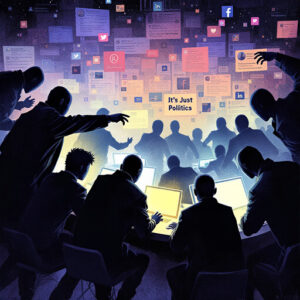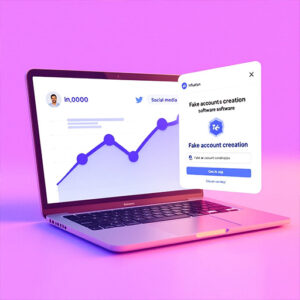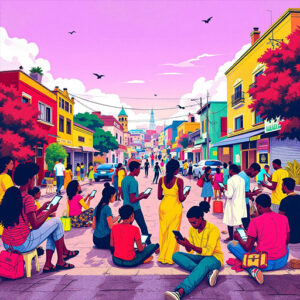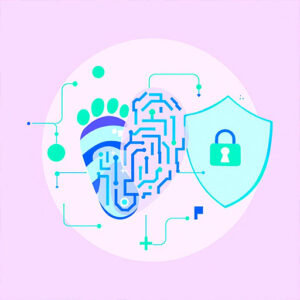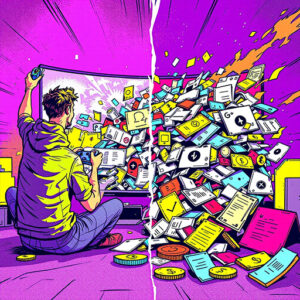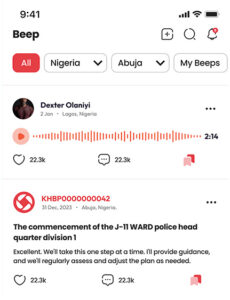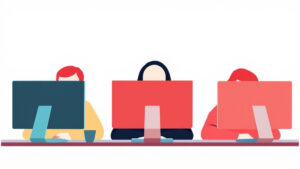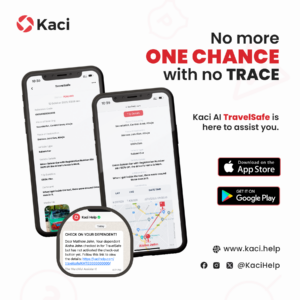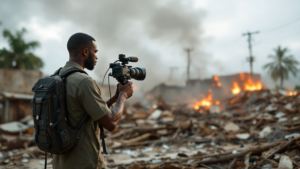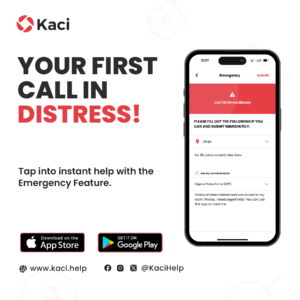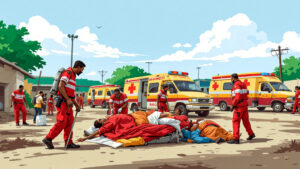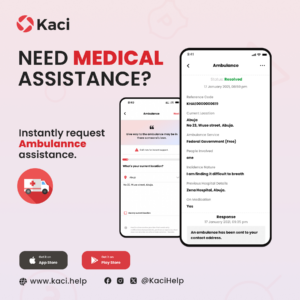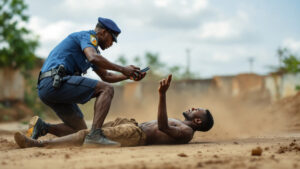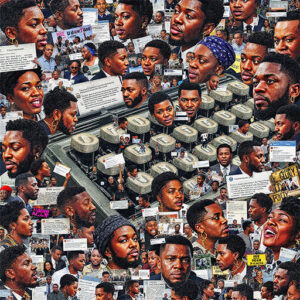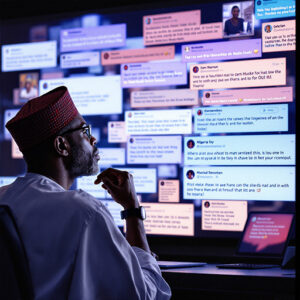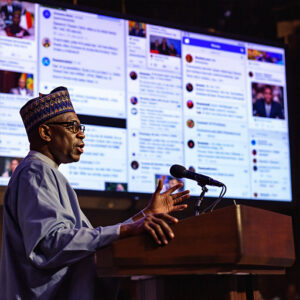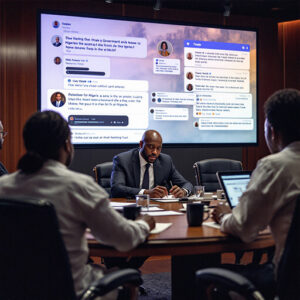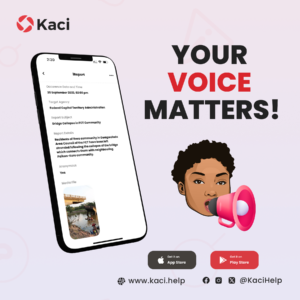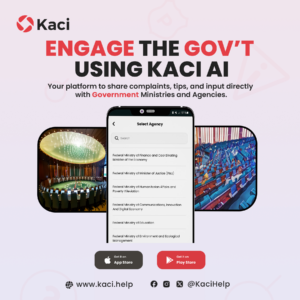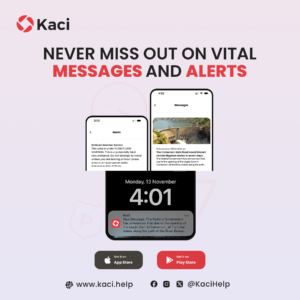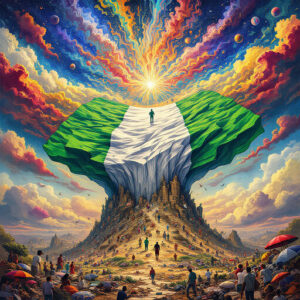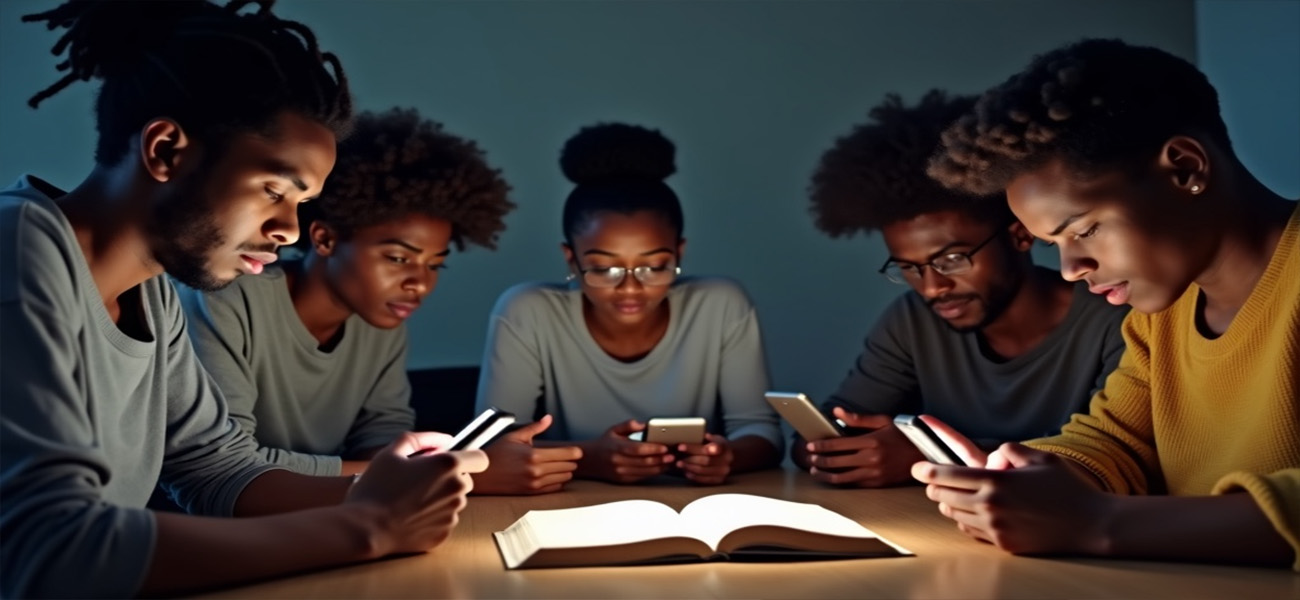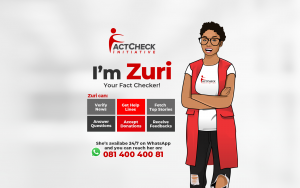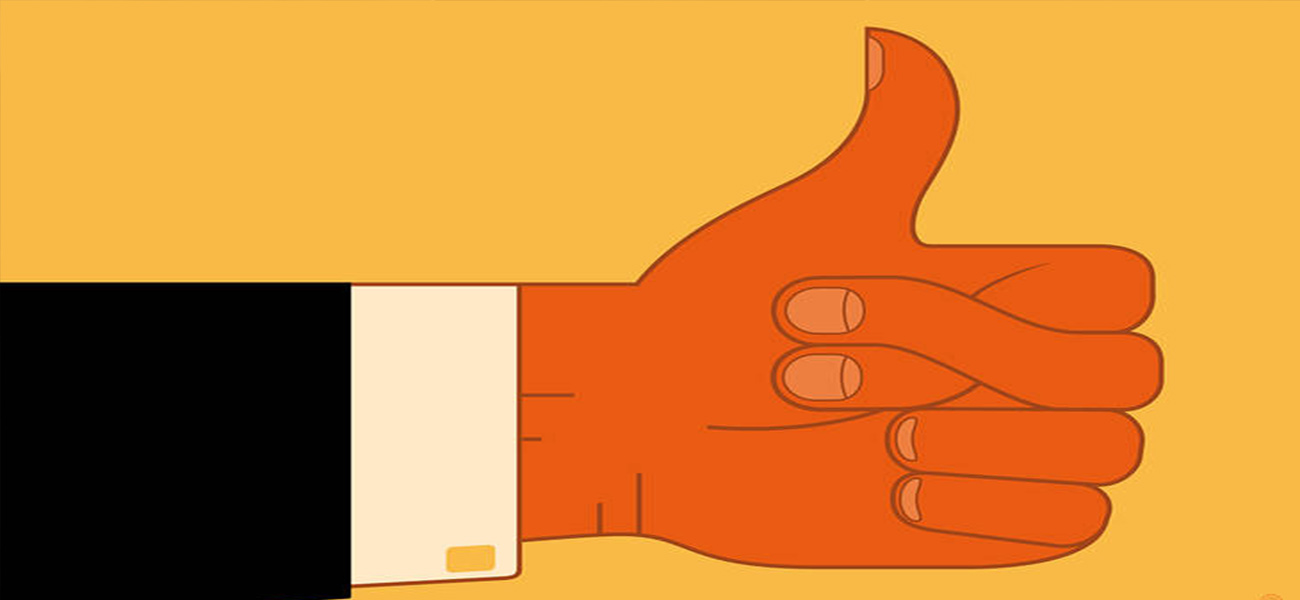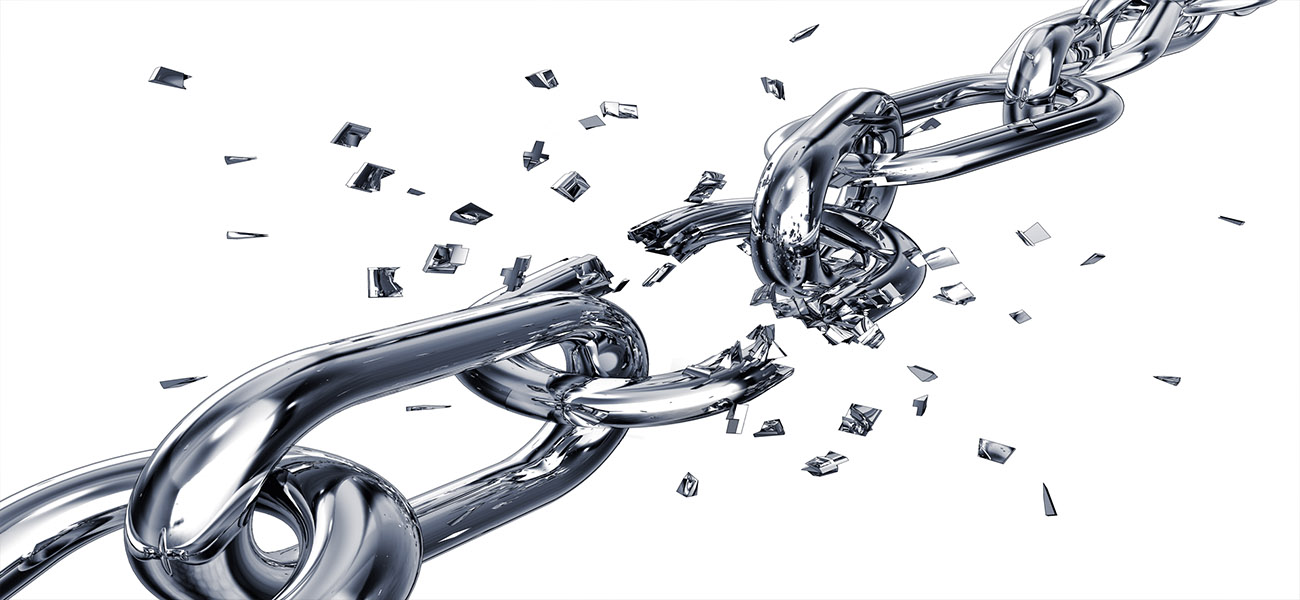Climate Change: What Does It Really Mean to the Average African?

While driving impact through the FactCheck Initiative (fcihq.org) as a Nigerian living in Africa, one question has always lingered in my mind: What does climate change really mean to the average Nigerian or, for that matter, to the average African? While climate change has undeniably been a major topic of global discussion, does the average African truly grasp its meaning and understand how it impacts their daily life?
This curiosity has driven me to delve deeper into the realities of climate change, offering insights and solutions that resonate with our unique African experience. One solution is the Kaci Help app, providing practical tips and resources to help users understand and act on climate change, even without formal education.
Growing up in Nigeria, I vividly remember that climate change wasn’t a concept that most people talked about. In fact, many didn’t even know what it meant. Back then, it felt like a distant issue, far removed from the everyday challenges of survival in a bustling city or rural village. But my curiosity grew, and I decided to ask a few people, friends and acquaintances from Nigeria, Benin, South Africa, Kenya, Sudan, and Equatorial Guinea what they thought about climate change. Most of them didn’t even know what the term meant.
Let me share some examples of their responses:
– Emeka (Nigeria): “Climate change? I think it’s about the weather changing. But honestly, I don’t really know much about it. All I know is that it rains a lot in the rainy season now, and sometimes it doesn’t rain at all.”
– Aya (Benin): “I’ve heard the term on the news, but it doesn’t seem like something that affects me directly. We’ve always had hot and dry seasons, so I don’t see what’s new about it.”
– Zanele (South Africa): “People talk about it, especially in relation to droughts, but it’s not something that I think about every day. The government should do something about it, not me.”
– Lilian (Kenya): “Climate change? I think it’s a rich people’s issue. I haven’t seen any real changes in my community. The rain comes and goes as it always has.”
– Ali (Sudan): “The only change I see is in the water scarcity. I don’t know if it’s climate change or just poor management of resources.”
– Carlos (Equatorial Guinea): “I know it’s something bad for the environment. But honestly, I’m just focused on making sure my family has food.”
These responses reflect the disconnect many Africans have with the term “climate change.” For most, it seems distant, abstract, and not directly related to their day-to-day survival. However, the reality is far more profound, and understanding climate change is essential for navigating the challenges it brings to our continent.
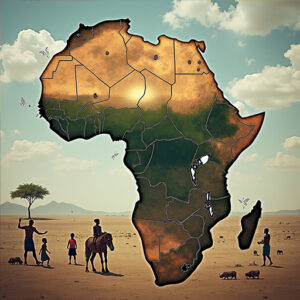
Image by ChatBawa AI
What is Climate Change to Us as Africans?
In simple terms, climate change is the long-term change in our weather patterns. It means the usual weather we experience like how hot or cold it gets, how much it rains, or how often storms happen is changing, and it’s having an impact on our daily lives.
You might have noticed that our weather isn’t as predictable as it used to be. Some years, it feels hotter than usual. Other times, there’s hardly any rain during the rainy season, or we get too much rain, leading to floods. These shifts in weather patterns aren’t random; they’re a result of climate change, and human activities are speeding it up.
Here’s how:
When we burn fuels for cars, factories, or to generate energy, we release gases that trap heat in the atmosphere. This makes the Earth warmer. So, we’re seeing:
– Hotter summers and warmer winters: Ever noticed that summers are getting hotter, and winters don’t seem as cold anymore?
– More storms, floods, and droughts: These extreme weather events, like heavy flooding or long dry spells, are becoming more common.
– Melting ice and rising sea levels: Rising temperatures are melting glaciers and causing sea levels to rise, which threatens coastal areas.
For us Africans, it’s not just about feeling a little warmer. This change affects everything. Our weather is less predictable, and that messes with our ability to grow crops, access water, and even stay healthy. For example, extreme droughts can ruin crops, making it harder to get food. In places like the Sahel or coastal areas, rising sea levels could destroy homes and livelihoods.
Climate change is already here, and it’s changing how we live, work, and even survive. It’s more than just a global issue it’s something that affects us right here, in our everyday lives.
Climate Change Through African Eyes
In my discussions with people from various African countries, it became evident that most don’t make the connection between climate change and their everyday struggles. In fact, many see it more as an environmental issue rather than a socio-economic one. For example:
– Emeka’s experience of unpredictable rainfall is linked to shifting agricultural cycles, making it harder for farmers to plan and harvest crops.
– Aya doesn’t realize that the increasing temperature and extended dry seasons could lead to water scarcity and reduced crop yields in her area.
– Lilian’s perception of climate change as a “rich people’s issue” stem from her inability to connect environmental shifts with the growing challenges she faces as a smallholder farmer.
These examples show that understanding climate change is more than an environmental issue it has direct consequences on food security, health, and livelihoods.

The Real Impact of Climate Change on Everyday Nigerians and Africans
Climate change is not just a future concern, it’s already here, and it’s affecting the everyday lives of people across Africa, including Nigeria, Kenya, Benin, Equatorial Guinea, South Africa, and beyond.

Image by ChatBawa AI
Agriculture: Climate change is making weather patterns more unpredictable, and this is hitting Africa’s agriculture hard. In Kenya, for instance, farmers are struggling with periods of severe drought, followed by unexpected rainfall that floods fields and ruins crops. This has led to a sharp rise in food insecurity, leaving families uncertain about their next meal. In Nigeria, farmers in the northern regions are facing similar challenges, with erratic rainfall affecting their ability to grow staple crops like maize and millet. In Benin, many farmers have seen their livelihoods threatened by shifting planting seasons, and with unpredictable weather, they find it increasingly difficult to feed their communities.
Water Scarcity: Across many African countries, including Equatorial Guinea, Kenya, Nigeria, and South Africa, water sources are shrinking. In South Africa, parts of the country have faced serious droughts, leading to water rationing in cities like Cape Town. The country has had to implement strict water management practices to ensure supply, yet rural areas are still facing severe shortages. In Equatorial Guinea, climate change is exacerbating issues around water access, and communities in remote areas find it harder to access clean water, leading to a rise in waterborne diseases. For many Africans, the long dry spells and shrinking water sources are a daily reminder of the challenges climate change is bringing to their doorsteps.
Health: The rise in temperatures is also contributing to the spread of diseases like malaria, cholera, and typhoid. In Nigeria, the increase in temperature has created a breeding ground for mosquitoes, leading to a surge in malaria cases. Personally, I find myself treating malaria and typhoid on average four times a year. In Benin, heavy rainfall from changing weather patterns has led to the spread of waterborne diseases such as cholera, as flooding contaminates clean water sources. South Africa faces similar issues, where increased temperatures and heavy rains encourage the spread of diseases and threaten public health systems that are already stretched thin. For many Africans, the health risks of climate change are a daily reality they can no longer ignore.
Across these countries, the consequences of climate change are already visible, affecting agriculture, water supply, and public health. And while some countries are taking steps to address these issues, it’s clear that much more needs to be done to prepare for the worsening impacts of a changing climate.
How Our Daily Activities Contribute to Climate Change
Our daily activities have a significant impact on climate change. For instance:

Image by ChatBawa AI
– Energy Consumption: The use of non-renewable energy sources such as coal and oil to power homes and industries releases large amounts of carbon dioxide (CO2) into the atmosphere. For example, the burning of fuel for cooking in many African homes is a major contributor to CO2 emissions.
– Deforestation: Many African nations rely heavily on wood for cooking and heating, contributing to deforestation, which in turn increases carbon emissions.
– Transportation: The widespread use of vehicles that run on fossil fuels contributes to greenhouse gas emissions. Many people in urban areas still rely on petrol and diesel-powered vehicles for transportation.
The Role of Technology: Kaci Help Mobile App
In our fight against climate change, every action counts, and the Kaci Help Mobile App (available on Google and Apple Play Stores) is here to make it easier for individuals to take meaningful steps toward reducing their carbon footprint. This app offers a practical, user-friendly way to track and reduce your daily emissions, helping you understand how small lifestyle changes can add up to a big impact on the planet.
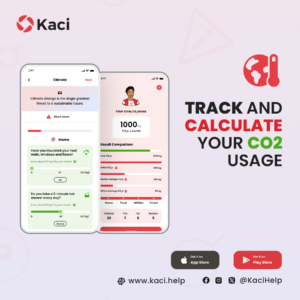
Photo by Kaci Help
Here’s how it works:
1. Home:
Do you know that by simply insulating your home’s roof, windows, and walls, you could save over 133kg of CO2 emissions each month? The app helps you identify easy changes you can make around the house. For example, taking shorter hot showers could save 60kg of CO2 per month, while avoiding unnecessary plastic use can cut down 8kg of emissions. Even small things, like reducing your toilet paper and paper towel usage, contribute to a greener home.
2. Food:
Your eating habits can have a huge impact on the environment. The app encourages more plant-based meals, which can reduce your emissions by up to 60%. For example, if you eat beef less frequently, you could save 173kg of CO2 per month. If you’re committed to buying locally grown produce or switching to plant-based milk, these actions could save an additional 19kg of CO2 per month. Every food choice, from reducing waste to growing your own veggies, adds up to a lower carbon footprint.
3. Utilities:
Did you know that simply switching to LED bulbs could save 54kg of CO2 a month? The app suggests energy-saving tips like using renewable energy sources such as solar or wind power, which can significantly cut your household’s emissions. Whether you’re using less energy or making eco-conscious decisions, the app makes it easy to track your impact and see the savings.
4. Travel:
Transportation is one of the biggest sources of CO2 emissions, but the app makes it simple to change your habits. By driving less than 40km per week or opting for more sustainable travel options, you could save up to 343kg of CO2 per month. And for those long-distance flights, reducing air travel could save 78kg of CO2 for each year you fly less.
Steps to Fight Climate Change: Practical Actions for Africans
As climate change continues to impact Africa, it’s crucial that we take steps both individually and collectively to reduce its effects. But how can you, as an African, play a part in fighting climate change? It’s easier than you think! Here are some simple and effective steps we can all take to help combat the crisis.

Image by ChatBawa AI
1. Use Clean and Renewable Energy
Switching to clean energy is one of the most impactful steps we can take. As someone who has personally embraced renewable energy, I can attest to its positive effect. I have encouraged installing solar panels in homes, offices, and businesses as a sustainable energy solution. Solar panels reduce reliance on the national grid, cut down carbon footprints, and provide long-term savings on electricity bills. With abundant sunlight in countries like Nigeria, solar energy offers a practical and eco-friendly alternative that can benefit many African households and businesses while contributing to environmental preservation. We all have a role to play in reducing our dependence on fossil fuels and embracing the cleaner, greener alternatives available to us.
2. Reduce Waste and Recycle
Waste management is a growing challenge, and living in Abuja, I’ve noticed how waste can quickly pile up, especially plastic waste, which is a major environmental concern. Simple changes in our daily habits can make a big difference. For instance, in my home, I’ve made it a point to reduce the use of plastic bags and bottles by opting for reusable containers. This small habit has significantly helped reduce my household’s waste and the amount of plastic in the environment. By reducing waste, recycling, and rethinking our consumption patterns, we can all contribute to a cleaner, more sustainable environment, no matter where we live.
3. Fight Misinformation and Fake News
As the founder of FactCheck Initiative (fcihq.org), I have seen firsthand how misinformation can hinder our collective efforts to tackle climate change. Fake news and inaccurate information can mislead people, especially when it comes to understanding the science behind climate change and the actions we need to take.
For example, in Nigeria and many parts of Africa, rumors about renewable energy being ineffective or too expensive often spread, making it harder for people to embrace clean energy solutions. It’s crucial for us to promote accurate, reliable information about climate change, debunk myths, and encourage the public to make informed decisions. We all have a responsibility to challenge misinformation, especially when it comes to something as urgent and important as climate change. By doing so, we ensure that people are empowered with the right knowledge to make real, impactful changes.
4. Switch to Cleaner Transportation
Transportation is a major contributor to greenhouse gas emissions, but there are steps we can take to reduce our carbon footprint. In Nigeria, the government, through the Presidential CNG Initiative (Pi-CNG), has been actively encouraging citizens to switch to Compressed Natural Gas (CNG) vehicles as a more environmentally friendly alternative to regular gasoline-powered cars. CNG vehicles produce fewer carbon emissions, reduce air pollution, and are more affordable to run. Additionally, there are public transportation systems using CNG, reducing the pollution caused by older buses and taxis.
For individuals, it’s now easier to switch to CNG with government-backed initiatives. If you’re considering buying a new car, you can explore CNG models or even convert your existing vehicle to run on CNG. It’s a practical way to contribute to cleaner air and a healthier environment.
5. Support Sustainable Farming
In many African countries, agriculture is the backbone of the economy. But farming practices also contribute to climate change. Sustainable farming practices, such as crop rotation, agroforestry, and organic farming, can reduce the environmental impact of agriculture. These methods not only help protect the land but also improve food security and resilience against climate change impacts.
If you’re a farmer or you know someone who is, promoting and practicing sustainable farming methods can make a significant difference. If you’re a consumer, try to buy locally grown and organic products, which often have a smaller carbon footprint compared to imported goods.
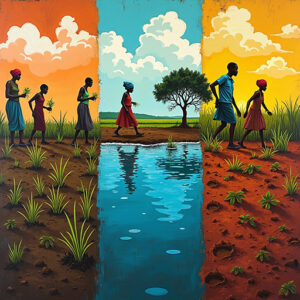
Image by ChatBawa AI
6. Plant Trees
Trees are nature’s way of fighting climate change. They absorb carbon dioxide and release oxygen, helping to balance the atmosphere. In many African communities, deforestation has led to soil erosion, loss of biodiversity, and disrupted rainfall patterns. By planting more trees, we can restore ecosystems and mitigate the effects of climate change.
Even if you don’t have a large space for a garden, you can plant a tree in your backyard or join local tree planting initiatives. It’s a simple action that can have long-term benefits for the planet and your community.
7. Conserve Water
Water scarcity is already a problem in many African countries, and climate change is making it worse. The more we conserve water, the less strain there will be on local water sources. Simple actions like fixing leaky taps, using water-efficient appliances, and reducing water waste during daily activities can help conserve this vital resource.
By making water conservation a priority in our homes, schools, and workplaces, we help preserve water for future generations, especially as droughts and water shortages become more common due to climate change.
8. Educate Others and Raise Awareness
One of the key steps in fighting climate change is to educate others and raise awareness. Personally, I’ve found that many people around me are unaware of how their daily actions contribute to the climate crisis or how simple changes can make a significant impact. From conversations with friends and family in Nigeria, to my work with the FactCheck Initiative, I’ve seen firsthand how vital it is to spread the message of sustainability.
For example, in my community here in Abuja, I’ve attended workshops that focus on climate change, encouraging people to adopt eco-friendly habits. Whether it’s talking about reducing waste or switching to renewable energy, these discussions help people realize how they can play a part in solving the problem.
I also use my social media platforms to share information about climate change, hoping to inspire others to live greener lifestyles. Small actions like these, talking to a neighbour or sharing an informative post, can spread awareness, motivating more people to join the fight against climate change. The more we engage, the greater the impact we can collectively make.
Collective Effort for a Sustainable Future
Fighting climate change requires a collective effort, and every small action counts. Whether it’s switching to clean energy, planting trees, reducing waste, or supporting cleaner transportation, each step can lead to a significant positive impact.
For us Africans, it’s not just about protecting the environment, it’s about safeguarding our livelihoods, health, and future generations. The government, businesses, and individuals all have roles to play in creating a more sustainable Africa. By making thoughtful changes in our daily lives, we can contribute to a cleaner, healthier, and more resilient continent.
Let’s embrace the change today, and create a better tomorrow for Africa and the world.
Kaci Help: Beyond Climate Action
The Kaci Help app is not just about reducing carbon footprints; it offers a suite of practical, real-time features designed to improve your safety, well-being, and engagement with critical issues, such as climate change and emergency responses. Key functionalities include:
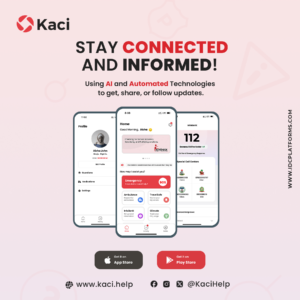
Photo by Kaci Help
– Emergency Tracking & Alerts: Whether you’re traveling or at home, Kaci helps monitor your safety. If you’re in an emergency, your location and details can be sent to your trusted contacts or authorities via SMS, WhatsApp, or email.
– SOS & TravelSafe Features: Keep your loved ones informed with travel check-ins and emergency alerts. Even if your phone is lost or stolen, your journey’s details will be sent to the people who need to know.
– Engage with the Government: Share your concerns, complaints, or suggestions directly with ministries and agencies via the app. Start conversations that can lead to meaningful change!
– Multi-Language Support: Kaci Help is available in 11 local and international languages, including English, French, Spanish, Arabic, Yoruba, Igbo, Hausa, Pidgin, Chinese, Portuguese, and Fula. This ensures that users from different backgrounds can easily access the app’s functionalities and stay informed on climate action and emergency alerts.
Kaci Help: Unmatched Trio Climate Projects to Support on www.kaci.help/projects
Kaci focuses on three impactful climate change solutions: restoring ecosystems, promoting green technology, and empowering communities.

Image by ChatBawa AI
1. Conservation: Support forest preservation and ecosystem restoration to combat carbon emissions. Nature’s own solution, trees, are key to capturing CO2.
2. Technology: Invest in renewable energy to reduce reliance on fossil fuels, promoting solar and wind power for cleaner energy alternatives.
3. Community: Improve lives and reduce emissions through energy-efficient cookstoves, cutting firewood usage and harmful air pollution.
Visit the Kaci website to explore, add to cart, and support these life-changing projects.
COP29 and the Global Effort Against Climate Change
The global community has recognized the urgency of addressing climate change, and platforms like the Conference of the Parties to the United Nations Framework Convention on Climate Change (UNFCCC) are central to these discussions. COP29, known as “The Finance COP,” was focused on ensuring that developed countries provide at least $300 billion per year to developing nations by 2035 to help mitigate the impacts of climate change.
Some of the key topics discussed included:
– Climate Adaptation: Initiatives like building sea walls to protect coastal communities from rising sea levels.
– Climate Mitigation: The need for transitioning to renewable energy sources, such as solar and wind, to replace fossil fuels.
– Just Transition: Ensuring that no one is left behind in the shift to low-carbon economies.
Conclusion
The impact of climate change is not a distant issue for Africans; it’s already here. From unpredictable rainfall affecting crops to rising temperatures worsening health conditions, the effects of climate change are deeply intertwined with daily life. While much of the population may not yet fully understand its implications, raising awareness and taking action — both individually and collectively — can help mitigate its worst effects.
As we move forward, it’s crucial that African nations, with the support of international bodies like the UNFCCC, build resilient systems that allow us to adapt to a changing climate and reduce our carbon footprints. The Kaci HelpMobile App is one step in the right direction, offering a simple yet effective way for Africans to understand and reduce their environmental impact.
Climate change may seem like a distant threat, but it’s already shaping the future of Africa. The question is: How will we respond?


